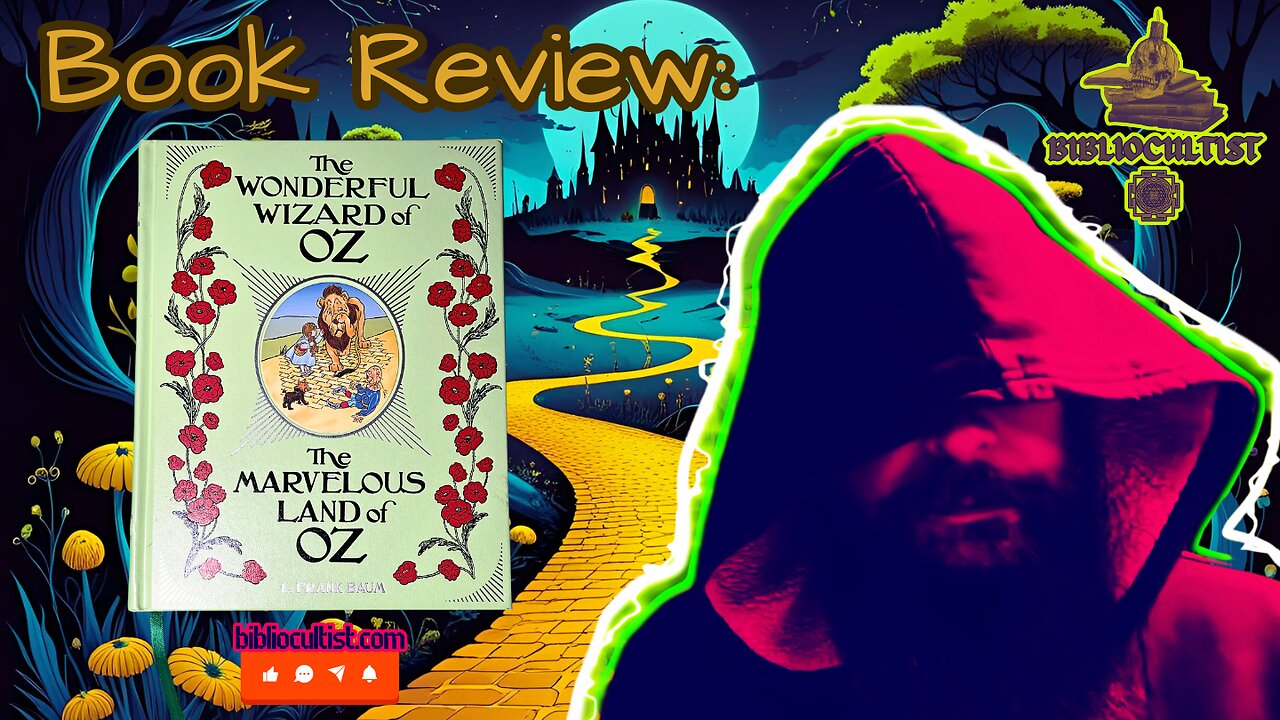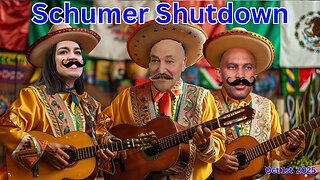Premium Only Content

The Alchemy of Oz: Baum's Occult Symbols
*CHECK OUT MY MERCH: https://bibliocultist.printful.me/*
In this thought-provoking video, I explore the hidden symbolism and esoteric meanings woven into L. Frank Baum's beloved Oz books, 'The Wonderful Wizard of Oz' and 'The Marvelous Land of Oz'. Baum's classic tales, while presenting moral lessons on the surface, contain intriguing alchemical allegories and occult undertones that may raise eyebrows among traditional Christians. However, I suggest these esoteric symbols can be interpreted through a Christian lens as allegorical representations of the soul's journey. While the books contain occult themes concerning to some, their deeper meaning can be seen as a spiritual odyssey towards enlightenment and self-discovery.
*all music and content copyright BiblioCultist.com*
#booktube #books #OzOccult #BaumAlchemy #ChristianEsoterica #WizardOfOzSecrets #SpiritualAllegory #HiddenInPlainSight #EsotericChristianity #SoulJourney #SymbolicOz #AlchemicalFairyTale #biblio #cultist
**SHOW NOTES**
1. L. Frank Baum, creator of The Wonderful Wizard of Oz (1900), was an American author and occultist influenced by Theosophy. His Oz series incorporated esoteric concepts through symbolic elements like Dorothy's silver shoes, the Yellow Brick Road, and the Emerald City's illusory nature. As a member of the Theosophical Society, Baum embedded metaphysical ideas about spiritual journeys and hidden wisdom within his children's stories, though he presented them as simple fantasies. This occult dimension becomes clearer in later Oz books, where alchemical transformations and initiatory trials appear more explicitly. His work remains a unique fusion of children's literature and Western esoteric thought.
2. Alchemy's Great Work seeks transformation via solve et coagula—dissolving base matter (ego/prima materia) to coagulate it into spiritual gold (philosopher's stone). The process mirrors inner purification through stages (nigredo, albedo, rubedo), uniting opposites to achieve enlightenment.
3. Theosophy is a spiritual movement founded in the 19th century by Helena Blavatsky, synthesizing Eastern and Western esoteric traditions. It teaches that all religions stem from a single ancient wisdom, emphasizing concepts like karma, reincarnation, and the evolution of the soul through cycles of existence. Theosophy explores hidden dimensions of reality, hierarchical spiritual realms, and the idea of ascended masters guiding humanity. It profoundly influenced modern occultism, New Age thought, and even literature, as seen in works by figures like L. Frank Baum, who integrated its concepts into symbolic narratives. Theosophy seeks universal brotherhood through the study of cosmic laws and the development of latent human potentials.
4. Most alchemical works throughout history were written by devout Christians, including many Catholic monks and clergy, rather than by neo-pagans or later esoteric groups like the Rosicrucians or Freemasons. Texts like the Alchymicum Britanicum and the works of Basil Valentine, Thomas Aquinas, and other medieval alchemists demonstrate a strong Christian framework, interpreting the Great Work as a divine process mirroring Christ's redemption. While later occult movements adopted alchemical symbolism, its original practitioners often saw it as an extension of their Christian faith, blending scripture, sacramental theology, and laboratory work into a unified spiritual science.
5. Romanticism was an 18th-19th century artistic and intellectual movement that emphasized emotion, nature, individualism, and the sublime. Reacting against Enlightenment rationalism, it celebrated imagination, folklore, and the supernatural, with figures like Goethe, Wordsworth, and Delacroix exploring themes of passion, untamed landscapes, and heroic struggle. Romanticism also revived medievalism and mysticism, influencing literature, music, and visual arts with its focus on personal experience and spiritual transcendence over rigid formalism. Its legacy persisted in later esoteric and fantasy traditions.
6. Naturalism is a philosophical worldview that asserts the physical universe is all that exists, rejecting supernatural explanations in favor of scientific inquiry and natural laws. It holds that everything—including consciousness and morality—emerges from material processes, with no need for divine or spiritual intervention. Rooted in thinkers like Spinoza and Darwin, naturalism underpins modern secular humanism and scientific materialism, prioritizing empirical evidence as the sole basis for understanding reality. Critics argue it reduces human experience to purely mechanistic terms, while proponents see it as the foundation for rational, evidence-based progress.
-
 LIVE
LIVE
Bannons War Room
7 months agoWarRoom Live
13,237 watching -
 LIVE
LIVE
Benny Johnson
58 minutes agoDemocrats Throw Hysterical MELTDOWN As Trump Gives Them 'Trump 2028' Hats, Trolls With 'Racist' Meme
5,235 watching -
 1:35:09
1:35:09
Dear America
2 hours agoDems Cause a Gov SHUTDOWN!! Remember THEY HATE YOU! + Bomb Threat At TPUSA Event!!
73K64 -
 LIVE
LIVE
Badlands Media
9 hours agoBadlands Daily: October 1, 2025
4,314 watching -
 LIVE
LIVE
Matt Kohrs
11 hours agoGov'nt Shutdown: Stocks Whipsaw, Bitcoin Pops & Gold Hits Record || Live Trading
1,141 watching -
 LIVE
LIVE
Law&Crime
1 hour agoLIVE: Gun-Cleaning Gone Deadly Trial – FL v. Leslie Boileau – Day 1
377 watching -
 DVR
DVR
House Republicans
52 minutes agoHouse Republicans Leadership Stakeout
18 -
 LIVE
LIVE
Wendy Bell Radio
6 hours agoThe Schumer Shutdown
7,720 watching -
 LIVE
LIVE
LFA TV
11 hours agoDEVOTION & BREAKING NEWS! | WEDNESDAY 10/1/25
3,632 watching -
 1:03:11
1:03:11
Crypto Power Hour
2 hours ago $1.41 earnedWTH Is Peer To Peer CryptoCurrency Trading?
18.6K6